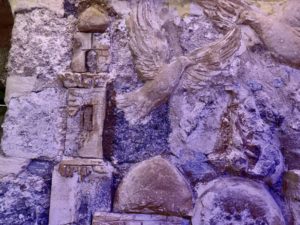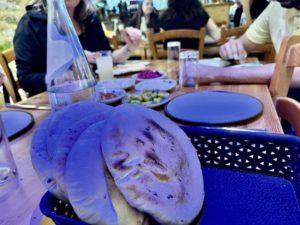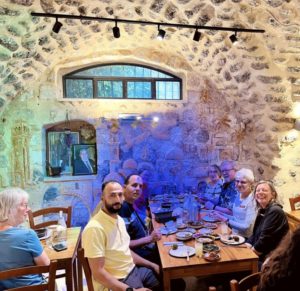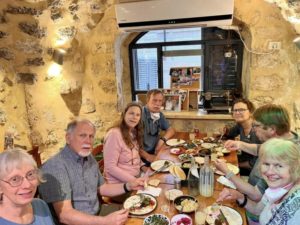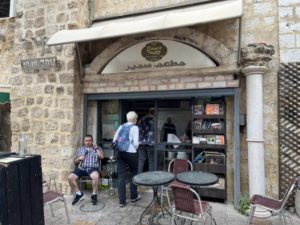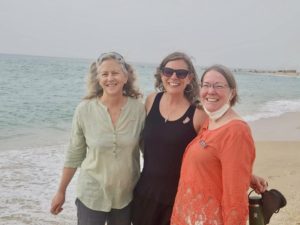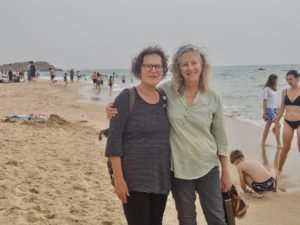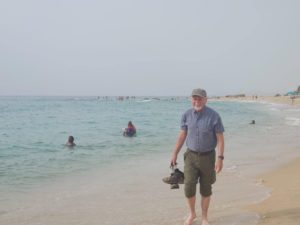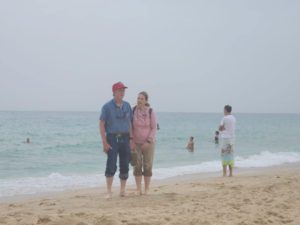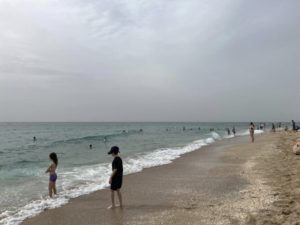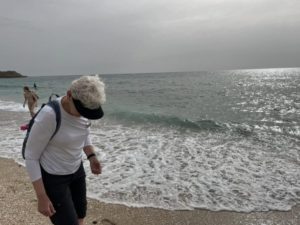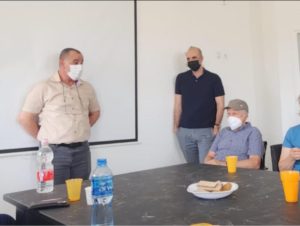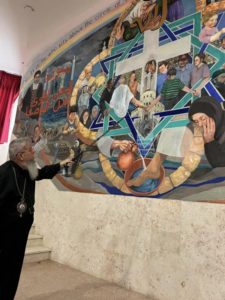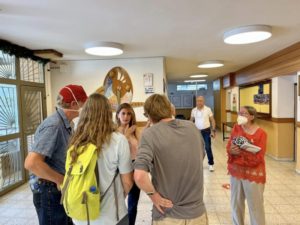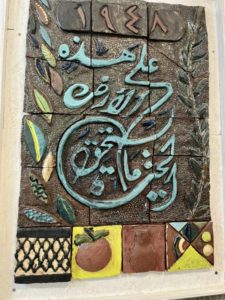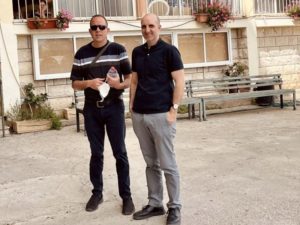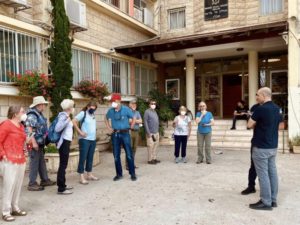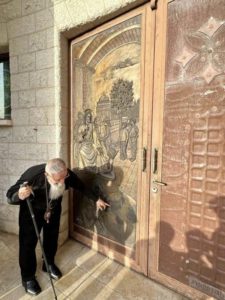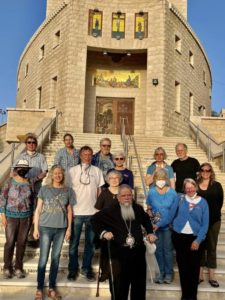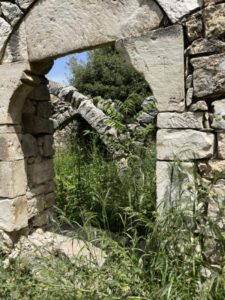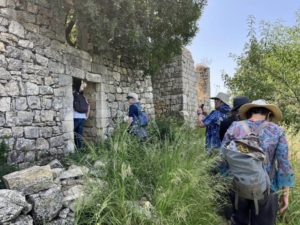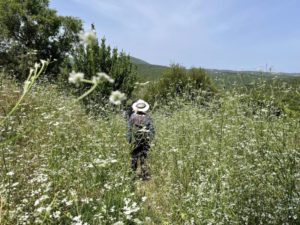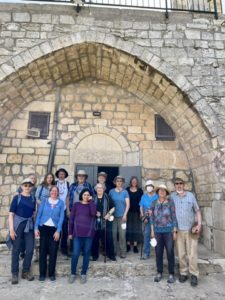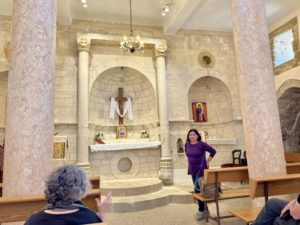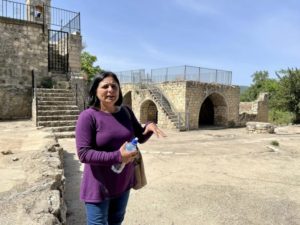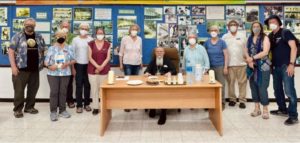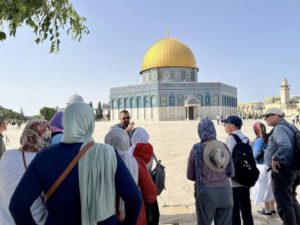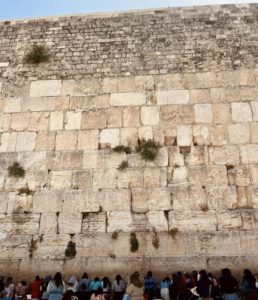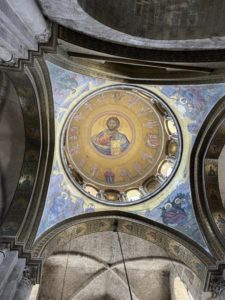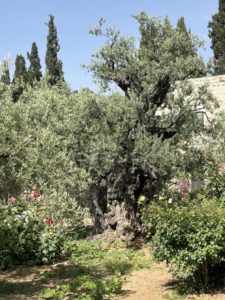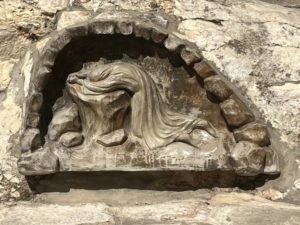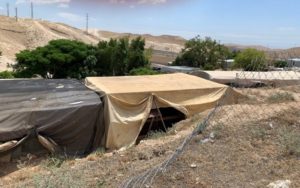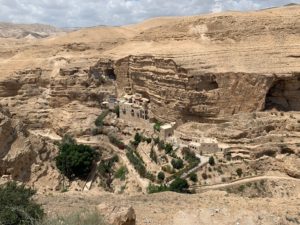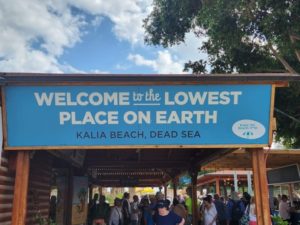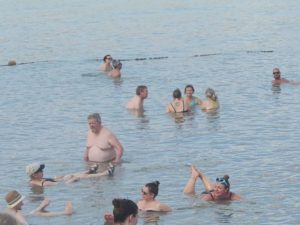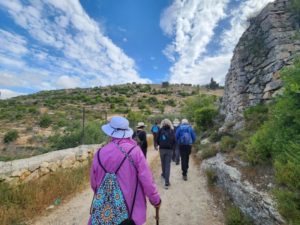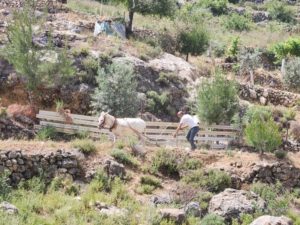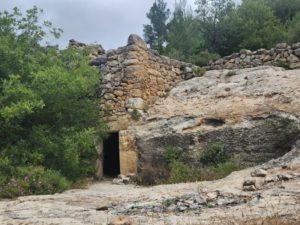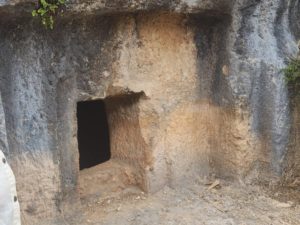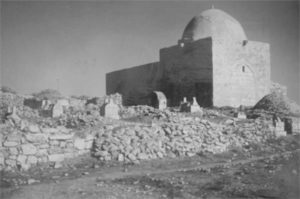 Our first day in Bethlehem it was suggested to us that we might want to go to the other side of the wall that took a quarter of Wi’am’s land, to the side of the wall where those who live in
Our first day in Bethlehem it was suggested to us that we might want to go to the other side of the wall that took a quarter of Wi’am’s land, to the side of the wall where those who live in 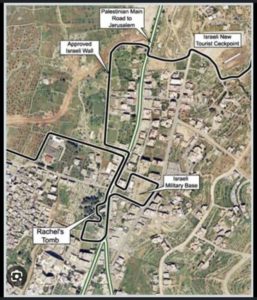 Bethlehem are forbidden, to Rachel’s Tomb.
Bethlehem are forbidden, to Rachel’s Tomb.
So today, that’s what we did.
We were asked if we wanted to walk through the Palestinian checkpoint. We thought it would be good to know what our guide experienced every time we 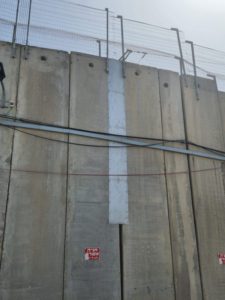 left Bethlehem—though, with our American passports our experience would not be like his.
left Bethlehem—though, with our American passports our experience would not be like his.
As we waited on the Israeli side of the checkpoint we looked over the olive tree 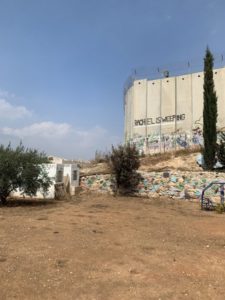 groves of those in Bethlehem; Palestinian olive tree groves in Israel; groves that their owners are only allowed to visit once a year.
groves of those in Bethlehem; Palestinian olive tree groves in Israel; groves that their owners are only allowed to visit once a year.
We took the bus to Rachel’s Tomb. It’s surrounded by concrete. I won’t go into details, but some not nice things were said to a few of us. During one of the incidents someone also stood up for us. There was no graffiti of protest—the angels were bolted out.
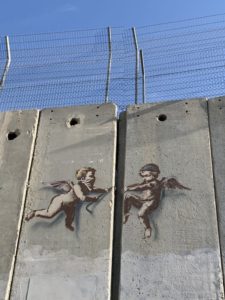 All I could think was, “Rachel is weeping for her children.”
All I could think was, “Rachel is weeping for her children.”
By Celene Lillie

